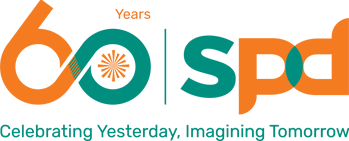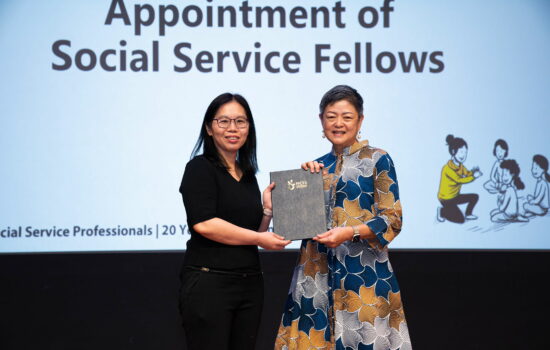Children who successfully complete the Early Intervention Programme for Infants and Children (EIPIC) at the end of the year will transit into the next phase of their education, be it in mainstream or special schools.
EIPIC centres play an important role in assisting parents to make informed post-EIPIC decisions for their children, and at the same time, providing support and ensuring a smooth transition for the children.
On 5 May 2017, Building Bridges EIPIC Centre in Tiong Bahru hosted parents to a transition planning briefing conducted by social workers. Topics covered included choosing the right school, how to prepare the child for the transition, and the pathways available for children with special needs. It was an informative session that helped convey the purpose, importance and processes of transition planning to parents and caregivers.
Parents and caregivers often face a dilemma when choosing between sending their child to a special education (SPED) school or a mainstream school, and are often not sure about the support that comes along if they make either decision. Here are a few pointers to look out for when deciding between whether to send your child to either a mainstream or a special school:
• Psychologist’s recommendations
• Curriculum available
• Student support
• Teacher-student ratio
• Co-curricular activities
• Cost, time and distance
Curriculum
While mainstream schools offer mostly academic subjects like English, Mathematics, Science and Mother Tongue, most special schools offer functional academics such as literacy, numeracy, and info and communicative technology, leading to vocational training as the child grows older.
Mainstream curriculum is only offered at the following three SPED schools: Pathlight School, which caters to children with autism, Lighthouse School, which caters to children with visual impairments, and Canossian School which helps children with hearing impairment. Like EIPIC, SPED schools have individualised educational reports and progress reports.
Support
Parents wishing to enroll their children into mainstream schools need to consider if their child can be adequately supported in a large group setting. The class size in mainstream schools is larger, whereas the teacher to student ratio in SPED schools is much smaller.
At SPED schools, there are teachers trained in special needs as well as speech therapists, occupational therapists, physiotherapists, and psychologists to support the children in their learning and development. Thus, it is advisable that parents and caregivers consider these before making any decision.
The hour-long session closed with a question and answer session where parents and caregivers sought to clarify their doubts. Here are the two main questions asked:
1) How do I decide if my child should proceed to a mainstream school or a special school?
It may be advisable to consult your child’s EIPIC team as well as his or her paediatrician for recommendations. The discussion can happen at any time during your child’s time at EIPIC. Parents and the EIPIC team can also have these schooling sessions during half-yearly case conferences. The paediatrician would normally arrange for a school readiness assessment to be conducted when the child turns 5½ years old. Based on the assessment results, the psychologist will recommend schools that are suitable. Parents or caregivers can then proceed to apply for mainstream schools or special schools via the EIPIC social worker.
2) How do I ensure that my child is supported if he/she enters a mainstream school?
Parents should call or visit the school that they are keen to enroll their child into to find out more about the support that the school can offer. While all mainstream schools have Allied Educators in Learning and Behavioral Support (AEDs), the number of them varies across schools. Parents should also keep in mind that their school of choice may already be supporting other students with special needs and the AEDs’ support will be shared. Do check with the school before making any decisions.
The briefing was well received by the parents and caregivers who attended.
“The session was informative and useful. It provided me with a clearer picture of the available options for my son’s future learning possibilities. This briefing allows us to understand the procedures and criteria for an entry into Primary School. This allows us, the parents, to be prepared. It provided us with many practical handles,” said a mother after attending the session.
Similar briefings are being conducted at Building Bridges EIPIC centres at SPD@Bedok, SPD@Jurong and SPD@Tampines. We hope that greater awareness and knowledge among parents and caregivers will help ease the children into the next phase of their learning journey.





